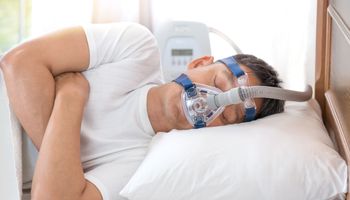Diabetes mellitus:
Diabetes mellitus, also referred to as "diabetes," describes a group of metabolic diseases with hyperglycemia (i.e., high blood sugar) in the medical report. The disease is generally classified into four types:
- Type 1 diabetes: disturbance of insulin secretion because the pancreas (i.e., pancreas) produces too little or no insulin. A special form of autoimmune diabetes in adults is LADA (i.e. Late onset Autoimmunity Diabetes in the Adult).
- Type 2 diabetes: The effect of insulin in the human body cells is disturbed. About 90% of those affected have this form of diabetes.
- Other specific types of diabetes:These include hyperglycemia due to dysfunction in the endocrine organs, drug-chemical causes, genetic defects in insulin production or action and other genetic disorders, infections, and rare types of autoimmune-mediated diabetes.
- Gestational diabetes:disorder of glucose utilization that occurs during the gestational period and is diagnosed with diabetes. Approximately 4-5% of pregnant women are affected.
As the number of prevalent type 2 diabetes sufferers increases at a young age, a better understanding of reasons for high risk is particularly important to reduce the risk of such diabetes. A determinant of insulin resistance and subsequently a first indication of type 2 diabetes is the so-called HOMA index (i.e. homeostatic model assessment).
Possible sleep deprivation in elementary school students:
The evaluations of the research team at St. George University in London show a slight increase in this HOMA index even at primary school age. Possible risk factor for this could be sleep deprivation; as the study researchers related sleep duration in the CHASE cohort studied (i.e. Child Heart and Health Study in England) to the HOMA index and fasting blood glucose and analyzed a possible correlation.
CHASE study:
The CHASE cohort included more than 4500 primary school students (from 200 school settings) aged 9 to 10 years. These provided various data to infer possible risk factors for future cardiometabolic disease, including fasting blood samples. This involves determining insulin concentration in the body and blood glucose, which can be used to determine the HOMA index. In addition to this, body composition data and self-reported values for sleep time and waking during school days were also known.
While elementary school students averaged 10-11 hrs of sleep per day, the average sleep duration in the CHASE cohort was around 10.5 hrs, but the range was 8-12 hrs. According to the study analysis, unfavorable examination scores were seen in those children who recorded shorter sleep duration.
While sleep duration is stable in adults, recent study results suggest that the average sleep duration in both children and adults has decreased by 0.73 minutes per year over the past 15 years. The overall consequences in association with physical health have yet to be studied in detail - however, the study published in the journal Pediatrics focused on the risk correlation with type 2 diabetes during childhood.
Results:
According to researchers, every extra hour of sleep can improve the HOMA index by 2.9%. However, blood glucose (of the children) was kept in the normal range by increased insulin secretion. Therefore, the effect of too little sleep on blood sugar was not significant at 0.24%.
But the researchers do mention a possible long-term increased risk of diabetes - because insulin resistance levels in childhood already showed an effect on diabetes type 2 risk over a 10-year period, according to researchers in previous studies. The cross-sectional study cannot provide an exact cause, but researchers mention that an increase in body weight could play a possible role. That's because previous research has shown a correlation between sleep deprivation and disruption of neuroendocrine appetite control in adults. Each hour of shorter sleep was associated with a 0.19 kg/m2 increase in BMI.
Conclusion:
Using the CHASE cohort of elementary school students, this cross-sectional study showed that a correlation between sleep duration and type 2 diabetes risk in childhood is possible. However, further intervention studies are needed to show exact causality of this possible association. If the preliminary results prove true, a simple strategy for early prevention of type 2 diabetes could be established.






